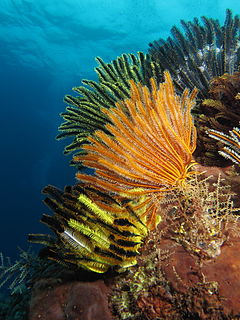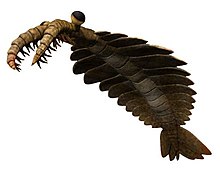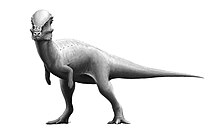Extinct Pokemon Part 1
This
may be the the second-most controversial topic in this project, only
behind Banned Pokemon. I call
this controversial because I killed off many fan-favorite Pokemon,
including the Grass-Type starters Bulbasaur, Chikorita, and Turtwig.
If
you've actually played games like Pokemon Red and Blue, Ruby and
Sapphire, Diamond and Pearl, Black and White, and X and Y, you may have
noticed that certain Pokemon can be resurrected from fossils. These
Pokemon include Omanyte, Kabuto, Aerodactyl, Lileep, Anorith, Craindos,
Shieldon, Tirtouga, Archen, Amaura, and Tyrunt. All of which (except
Aerodactyl) can evolve into stronger Pokemon. Omanyte can be revived
from a Helix Fossil, Kabuto can be revived from a Dome Fossil,
Aerodactyl can be revived from Old Amber, Lileep can be revived from a
Root Fossil, Anorith can be revived from a Claw Fossil, Craindos can be
revived from a Skull Fossil, Shieldon can be revived from an Armor
Fossil, Tirtouga can be revived from a Cover Fossil, Archen can be
revived from a Plume Fossil, Amaura can be revived from a Sail Fossil,
and Tyrunt can be revived from a Jaw Fossil.
Omanyte
and Omastar are based on ammonites, extinct relatives of the nautilus,
and lived from the Devonian Period to the Cretaceous Period. Their
fossils, the Helix Fossil, can be found worldwide.
Kabuto is based on the famous trilobite, while Kabutops is based on a
sea scorpion. These Water/Rock-Type Pokemon lived from the Cambrian
Period to the Permian Period, and their fossils, the Dome Fossil, can be
found worldwide.
Aerodactyl,
based on the famous pterosaurs, roamed the skies of the Jurassic and
Cretaceous Periods. Its fossil, Old Amber, can be found in the USA.
Lileep
and Craydily are unusual Grass/Rock-Type Pokemon based on Crinoids,
unusual relatives of the starfish. They look something like this.

Early crinoids, as well as Lileep and Craydily, roamed the seas of the Cambrian and Ordovician Periods. Their fossils, the Root Fossil, can be found worldwide.

Early crinoids, as well as Lileep and Craydily, roamed the seas of the Cambrian and Ordovician Periods. Their fossils, the Root Fossil, can be found worldwide.
Anorith
and Armaldo are based on the extinct aquatic arthropod Anomalicaris,
which means 'abnormal shrimp'. It may have looked like this.

These Bug/Rock-Type Pokemon, along with Anomalicaris, roamed the oceans of the Cambrian Period. Their fossil, the Claw Fossil, can be found in North America, Europe, China, and Australia.

These Bug/Rock-Type Pokemon, along with Anomalicaris, roamed the oceans of the Cambrian Period. Their fossil, the Claw Fossil, can be found in North America, Europe, China, and Australia.
Craindos
and Rampardos are based on the Pachycephhlosaurus, a dinosaur with a
thick skull that may (or may not) have been used for bashing their heads
together like rams. It may have looked like this.

These Pokemon lived during the Cretaceous Period, and their fossils, the Skull Fossil, can be found in North America.

These Pokemon lived during the Cretaceous Period, and their fossils, the Skull Fossil, can be found in North America.
Shieldon
and Bastiodon are based on the Pachyrhinosaurus, a relative of the
Triceratops. It may have looked like this.

These Rock/Steel-Type Pokemon, along with Pachyrhinosaurus, lived during the Cretaceous Period. Their fossils, the Armor Fossil, can be found in North America.

These Rock/Steel-Type Pokemon, along with Pachyrhinosaurus, lived during the Cretaceous Period. Their fossils, the Armor Fossil, can be found in North America.
Archen
and Archeops are based on early birds called Archaeopteryx. It may have looked like this.

These Rock/Flying-Type avians, along with Archaeopteryx, lived during the Jurassic Period. Their fossils, the Plume Fossil, can be found in Germany.
These Rock/Flying-Type avians, along with Archaeopteryx, lived during the Jurassic Period. Their fossils, the Plume Fossil, can be found in Germany.
Tirtouga
and Carrocosta are based on the Archelon, a gigantic extinct species of
sea turtle. It may have looked like this.

These creatures, along with Tirtouga and Carrocosta, swam in the oceans of the Cretaceous Period. Their fossils, the Cover Fossil, can be found in North America.

These creatures, along with Tirtouga and Carrocosta, swam in the oceans of the Cretaceous Period. Their fossils, the Cover Fossil, can be found in North America.
The
Rock/Ice-Type sauropods Amaura and Aurorus are based on the
Amargasaurus. It may have looked like this.

This large dinosaur, along with Amaura and Aurorus, lived in Argentina, a South American country, during the Late Jurassic to Early Cretaceous Periods. Sail Fossils can be found in Argentina.
This large dinosaur, along with Amaura and Aurorus, lived in Argentina, a South American country, during the Late Jurassic to Early Cretaceous Periods. Sail Fossils can be found in Argentina.
Tyrunt
and Tyrantrum are, of course, based on the famous Tyrannosaurus Rex.
These Rock/Dragon-Type dinosaurs, like the T-Rex, lived in North America
during the Cretaceous Period. Jaw Fossils can be found in the USA and
Canada.
More will be talked about in Part 2, which will appear next week.
No comments:
Post a Comment